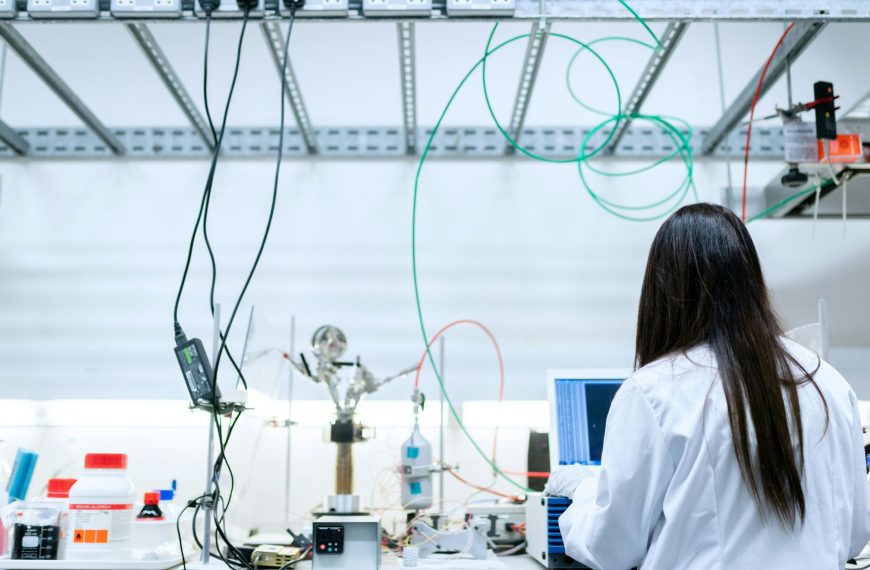The Playbook for SMEs and Microbusinesses Preparing for What’s Next
2026 is shaping up to be a defining year for small and medium-sized businesses. Or is it?
While the future is never certain, one thing is clear: the businesses that thrive will be those that anticipate change, adapt quickly, and turn uncertainty into opportunity.
Rather than relying on predictions, smart business owners are watching key signals that could shape market conditions in the year ahead.
These include:
- Ongoing economic adjustments following recent inflationary periods
- Evolving access to capital for scaling and innovation
- Rapid advancements in AI and digital tools
- Shifting customer expectations and behaviours
While global events may feel distant, their ripple effects often reach even the smallest businesses—through supply chains, customer confidence, or financing conditions. Staying informed doesn’t require deep expertise in macroeconomics; it simply means paying attention to trends that could impact your operations or customers.
How to spot real innovation opportunities in 2026—systematically, not by chance?
Look Through the Lens of Empathy
In 2026, technology will continue to evolve faster than many customers can fully articulate their needs.
That’s why observing behaviour—rather than just asking for feedback—is your most powerful tool. AI is one of those needs that didn’t exist before ChatGPT was launched. We never would have imagined that AI would have become our content creator, assistant and –as research suggests– confidante.
This is where the concept of “empathy” comes in handy. Empathy in business isn’t just a soft skill; it’s a strategic method for uncovering hidden pain points. Empathy as a business driver in innovation management has been discussed in academia and industry for a long time. Yet, its potential is seldom understood.
What does it mean to design or review a product or a service empathically?
Consider how people are already adapting:
- Home cooks using AI tools to plan meals, reduce food waste or use unfamiliar ingredients
- Freelancers automating admin tasks with AI assistants
- Customers turning to social platforms like TikTok not just for product discovery, video reviews and problem-solving
Each of these behaviours reveals unmet needs around convenience, personalisation, or efficiency. While AI wasn’t originally developed to help working parents plan creative meals or manage a freelancer’s schedule, it’s being adapted for exactly those purposes. Similarly, TikTok was designed as an entertainment platform—but users have repurposed it for everything from product discovery to real-time community reporting.
Their meanings and intended purposes have been re-imagined to respond to a need.
Without diving into academic theories about how communities reshape technology, consider a familiar example: Microsoft Excel. Originally designed for accounting and basic calculations, it’s now used for everything from music production and project management to data visualisation and even lightweight data science—yes, some teams still connect live databases to Excel, despite the availability of more specialised tools.
This isn’t about the tool itself—it’s about what people do with it. When users adapt technology to solve real problems, they reveal gaps in the market and opportunities for smarter, simpler solutions.
Action Step:
Spend 20 minutes this week quietly observing how your customers (or even your team) interact with your product, service, or workflow. What “office” tool in your business is being used in ways its creators never imagined? Notice what people avoid, what they improvise, or what frustrates them—even if they don’t complain. That’s where your next innovation might begin.
Scan the Edges — Where Change Starts
The biggest opportunities rarely come from within your own industry.
They emerge at the intersection of adjacent fields, new technologies, or unexpected customer behaviours.
For example:
- Local retailers are blending physical and digital experiences to create “showroom” models
- Service-based businesses are using AI to personalise client onboarding
- Small manufacturers are exploring blockchain for transparent sourcing
These aren’t just tech experiments—they’re responses to real shifts in what customers value: trust, speed, and relevance.
However, be realistic. Innovation isn’t about adopting the newest technology simply because it’s trending—it’s about solving real problems for real customers.
In recent years, even respected players in the food and beverage sector have experimented with emerging tools—such as NFTs, virtual winery tours, and immersive 3D experiences—only to find that the technology, the audience, or the timing wasn’t quite ready.
These weren’t missteps, but necessary experiments that revealed an important truth: not every innovation fits every business model.
The lesson? Stay curious—but anchor your experiments in your customers’ actual behaviours and your operational realities. A tool is only valuable if it enhances what you already do well.
Action Step:
Each month, study one business outside your sector that’s using technology or strategy in a novel way. Ask: “Could a version of this work for my customers?” You don’t need to copy it—just adapt the insight.
Audit What You Can Actually Deliver
Innovation isn’t about chasing every trend. It’s about matching emerging opportunities with your unique capabilities.
A refreshed SWOT analysis can help you filter ideas strategically:
| Lens | Ask Yourself |
|---|---|
| Strengths | What can we uniquely deliver better than anyone else? |
| Weaknesses | What would stretch us too thin or too far? |
| Opportunities | Which external shifts (AI, regulation, consumer behavior) align with our purpose? |
| Threats | What could make this idea obsolete in 18 months? |
This turns SWOT from a planning exercise into a decision-making filter. We always encourage SMEs and microbusinesses to think of formulaic frameworks like PESTLE and SWOT as dynamic tools: tools that can be used periodically to evaluate innovation, strategy and decision-making
Action Step:
List your top three innovation ideas and evaluate each against this framework. Focus only on the ones that leverage your strengths to solve real, emerging problems.
Adapt a Startup Mindset — Even if You’re Not One
Startups have something that established businesses lack: the drive to constantly test, pivot, and observe.
In 2026, SMEs and microbusinesses must think like startups even if they don’t act like them. An innovation-driven leader will take each product or each ‘problem’ or impasse within the company with a startup mindset.
That means:
- Validating ideas quickly with small experiments.
- Gathering data before scaling.
- Being willing to adjust strategy fast when markets shift.
You don’t need venture capital to do this. You need a mindset that values learning over perfection.
Action Step: Pick one idea and run a mini test within 30 days — a landing page, a prototype, or a short pilot offer, a change within office practice. Gather feedback, refine, repeat.
Understand: Innovation Is Discipline, Not Luck
Innovation in 2026 isn’t about genius moments or tech fads. It’s a process — a habit of watching, questioning, and adapting faster than others.
The world’s most resilient small businesses share three things in common:
- Empathy for real problems.
- Curiosity about emerging trends.
- Strategic focus on what fits their mission and resources.
Miss the signal, and even the best execution will fail.
But when you catch it early, you don’t just survive change — you shape it.
Final Thoughts
Scaling and growth in 2026 may take the form of sense-making for some SMEs and microbusinesses.
In a world of noise, volatility, and rapid technological change, the real advantage lies not in predicting the future but in reading the present more clearly than others. The most resilient businesses are always those that treat observation as a discipline, curiosity as a strategy, and small experiments as their early-warning system.
Don’t wait for clarity—create it. The next breakthrough rarely arrives with fanfare. More often, it’s already embedded in your customers’ habits, your team’s workarounds, or the quiet gaps between what’s offered and what’s needed.
Look closer. Move sooner. And trust that the future is built by those who notice what others overlook.
Become an Innovation Leader
Built on academic rigour and real-world industry experience, we’ve crafted a 6-part micro-course series on Innovation & Strategic Leadership.
“Introduction to Innovation Strategy” is the essential first step.
Start your journey




